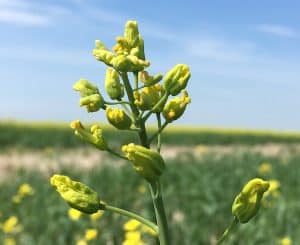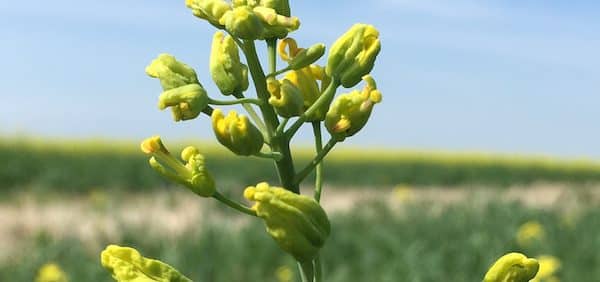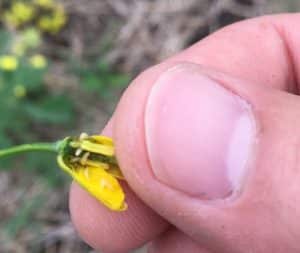Distorted canola growth thought to be from swede midge (Contarinia nasturtii) is likely caused by a separate midge species (Contarinia brassicola). Scientists were suspicious that two midge species were present in canola in Western Canada when pheromone traps specific to swede midge were not catching any even though midge were present at relatively high numbers in fields and in emergence traps.
Either the pheromone traps weren’t working or two species were present. As a test, midge researchers sent the pheromone traps to Ontario, where swede midge are fairly common, and the traps lured lots of midge. Ruling out trap malfunction, adults from the suspect species were sent to midge experts in Ontario, who confirmed it as a similar but separate species.
Neither species has caused significant damage in the Prairies yet, but in Ontario, some growers have had to stop growing canola because of midge losses. When swede midge lay eggs early – at the five- to seven-leaf stage of canola – the plant may yield next to nothing. With lots of midge, damage across a field can be devastating.
The new species has been found in the northern canola-growing belt in Saskatchewan and into east central Alberta. Researchers will more intensely study distribution of both species, and focus on the biology of the new species.
Known damage from the new species includes galled, bottled flowers that result from larvae feeding inside. Damaged flowers do not produce pods or seeds. (See the photos.)
Pesticide management is difficult because adults are hard to see and live only a few days and because larvae are protected inside the plant. Researchers will look at plant traits that could provide some resistance and have also identified two beneficial parasitoid wasps that attack at least one and perhaps both species.
Listen to a Canola Watch podcast with AAFC’s Boyd Mori, CCC agronomy specialist Keith Gabert and host Jay Whetter:
Watch the midge video:
Swede Midge and Canola from Canola Council of Canada on Vimeo.


